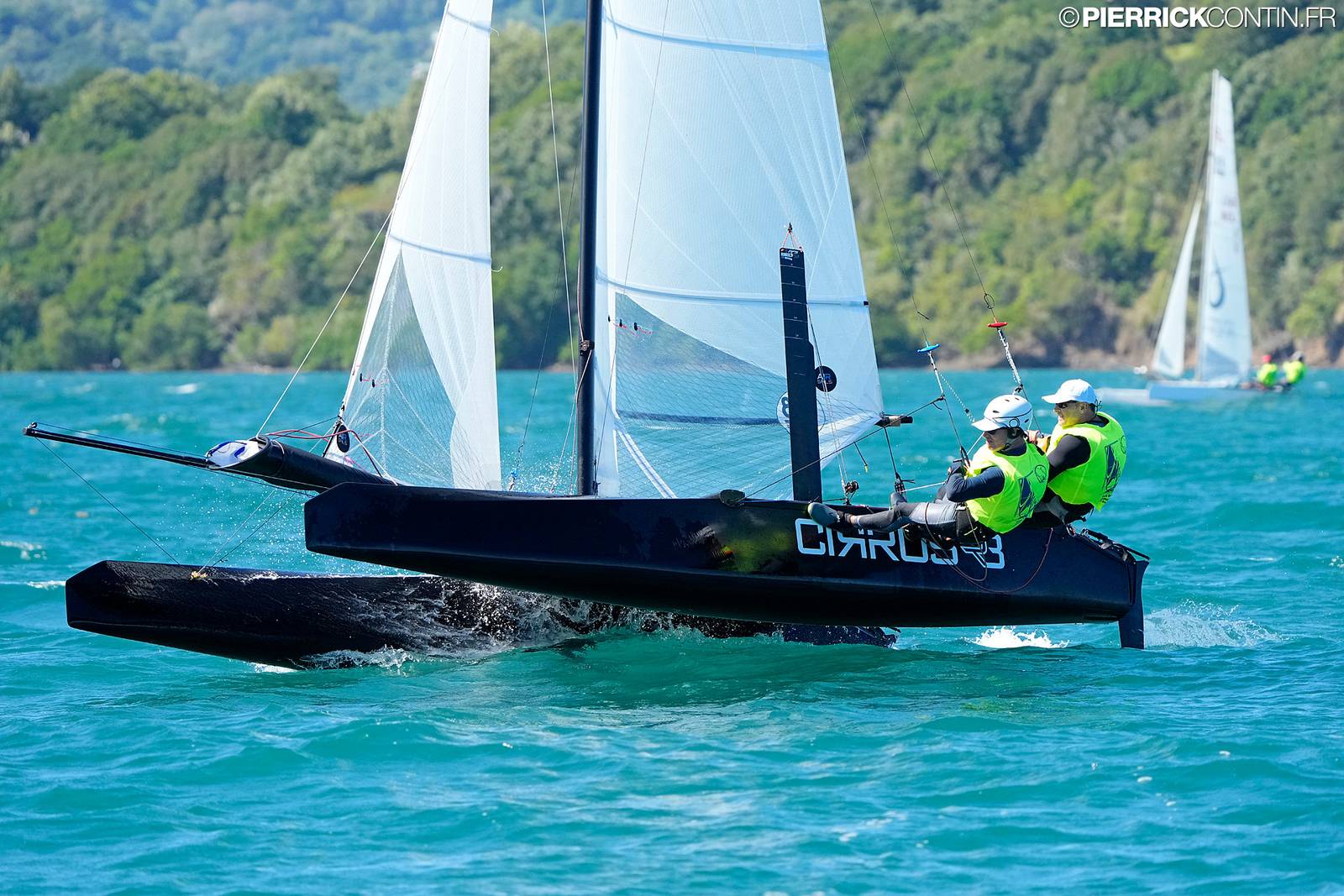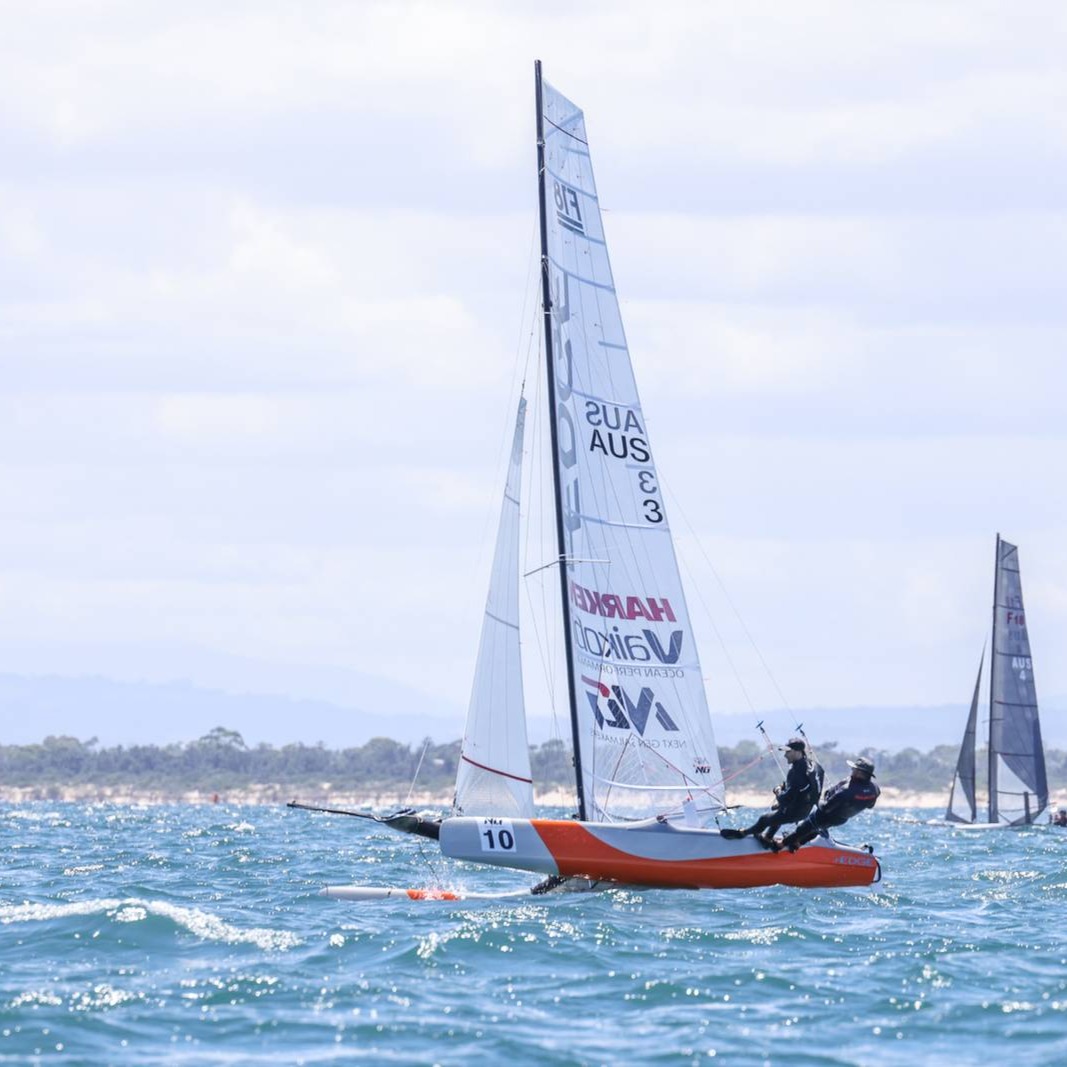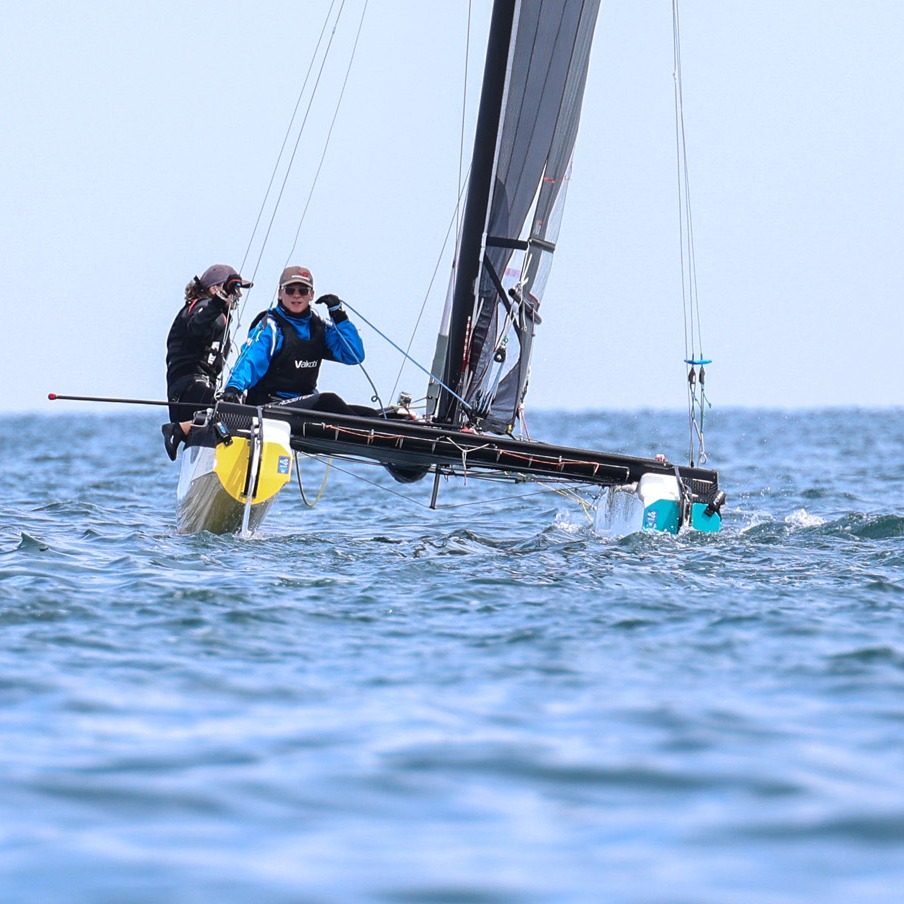Americas Cup: INEOS UK Design view
Photos: Team INEOS UK . Below Article published at INEOS UK offcial web. Good and realistic QA with Nick Holroy, INEOS Chief Designer, about the proto and coming AC75 launch. Ainslie didn’t had the best boat at Bermuda but the team was focused and capable to win. We hope this next AC edition the ‘Animal’ can put all his talent and drive once more on the course race but this time on board a platform that can match his own performance level.
Team INEOS UK – The team are gearing up to launch their first AC75 race boat
As we count down to the launch of the team’s first AC75 race boat, code named ‘RB1’, we talk to Head of Design, Nick Holroyd; a previous winner of the Cup with Emirates Team New Zealand in Auckland in 2000, the AC36 will be Nick’s 7th Cup campaign.
Nick was instrumental in bringing foiling technology into the America’s Cup six years ago, ahead of the AC34 in San Francsico. Here he talks about the radial new design for the next edition and the technical challenges in building a boat like no other.
DW: Was there a heightened level of excitement about getting the opportunity to design the first iteration of a brand-new America’s Cup class?
NH: There is something special about this design process because there is no conservative option so it is a very nice time to work in the field and you are not constrained by people saying “why does no one look like that”, essentially you can do what you like.
DW: Given that creating a 75-foot foiling monohull has never been tried before, does that add to the pressure on the design teams? If so how?
NH: Not all, we saw this as an opportunity to show what we can do. I look at what we do as a craft and you kind of practice your craft to get better, and if you are lucky, as you get better at your craft you get offered bigger opportunities to do that.
This is certainly one those bigger opportunities!
DW: Can you describe/outline how you approached the challenge of designing your AC75? Once you first read and digested the Class Rule, what were the key milestones to coming up with your first design?
NH: First off, you’re trying to see where should I be investing my energy; I have got defined resources, so how could I best apply that, what are the key areas of the boat. So that is the first kind of step. The next step after that is probably asking “do I have the right people to achieve those goals; do I need to move people around, do I need to retrain or hire new people and it’s that kind of resource planning, those are almost the biggest decisions you make in the entire campaign, where to put your focus and how much resource to apply to it.
DW: Breaking the design process down into categories – hull, foils, rudders, sails – did you have teams working on each one? How do you manage the challenge of looking at the design of the boat as a whole?
NH: One of the things that is going to be really difficult about this boat is the fact that we can’t make any changes during the Cup racing period. This is a big change to the rules of the last cup where we all got used to the paradigm of designing foils specifically for a condition or a rig specifically for a condition. This time we are going to be fixed, and, you know, five days before the Cup we will have to define our configuration and that is going to get us through the entire Cup; the Cup’s 10-day window and so you talk about sort of 15 days out, there is no way you can forecast weather across that time scale.
So actually what is hard about this boat is trying to make it the kind of all-purpose boat that goes well in every condition; kind of identify what are the key aspects of the boat that goes well in light air here, what are the key aspects of a boat that go well in the average wind speed in Auckland, and how do I still go well and survive in really breezy conditions. Those are some of the hardest trade-offs we will make.
DW: Your scale-down test boat must have been a massive asset in gathering data to be fed into subsequent designs of the full-sized boats to be largely similar, or vastly different? Where might we expect the biggest differences to come from?
NH: T5 is 28 feet so roughly 40% of the length [of RB1] but only about 12% of the displacement of the big boat so it is tiny. What has been good for us is the systems development, as surprisingly they are almost more complex on T5 than they are on the AC75 because we are so short of hands when you only have two guys on board, which has benefited the systems team as they now have a blueprint for the big boat, so that’s time well invested.
One of the things that happens during these campaigns is you effectively establish a kind of language – the way you talk about the boat, the way it behaves. So T5 has given us an opportunity to kind of cement that language and build a strong relationship between the design and sailing team that has also been hugely valuable. Finally, the other major benefit came out during our winter training where we went down to a nice, controlled environment at Mar Menor in Spain where we had really good consistent testing conditions to start looking at the performance of the little boat. Again, that is going to stand us in really good stead when we take that more scientific approach to looking at the performance of the AC75.
DW: We won’t know until each of the boats are launched exactly which way individual teams have gone on their designs, but are you expecting the boats to be largely similar or vastly different? Where might we expect the biggest differences to come from?
NH: The boats could be quite similar, there are some basic things you have to do. You’ve got to get the windage over the crew right, you need the crew weight in the right place, you’ve got to try to end plate the sail plan properly. All things we’ve learnt from sailing fast boats in the last few Cups.
The different Hull forms could be vastly different, there is maybe a trade between light air performance when the hull is in the water and of the performance of the hull as it takes off and assists you into the foiling stage so people may have made different decisions there.
For most of the teams except ETNZ we have already seen attempts at engineering the double skin mainsail, I would sort of expect the big boat developments to be continuations of what we have already seen so there’s a chance the rigs may look surprisingly similar.
DW: Maybe hard to answer at this stage but how different might the teams’ second AC75 designs to be their first ones?
NH: I hope they are not close. The class rule came out 1st of April last year and we have signed off the lines of this boat in September so four and a half months of development work was necessarily somewhat quick and dirty in that process. We have had another nine or 10 months of improving our tools and getting the data we require. Race boat two will be more than just a refinement of boat one.
DW: Is there anything else you would like to comment on the design and the process?
NH: These boats are extremely complex. The part count in the foils, the level of kind of detailed mechanical engineering is exceptional, I would suggest a step up in complexity from where the Cup has been before, so it’s a fun area to play in, which is kind of cool.


































I just heard that my great sailing friend and former CEO of Hobiecat Europe has passed. May The endless oceans…
...Report was sent by an F18 Sailor, if you want Hobies reported send your own, we'll publish as usual. Cheers.
Looks like in your report the Hobies are not really present. Suggest to rewrite the article.
Thanks for the great report Wik. Great battle.
If I correctly read the results the overall winner this year is a Hobie16